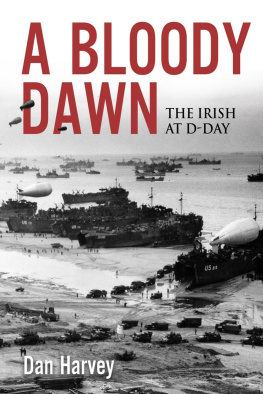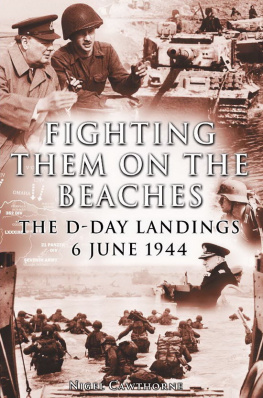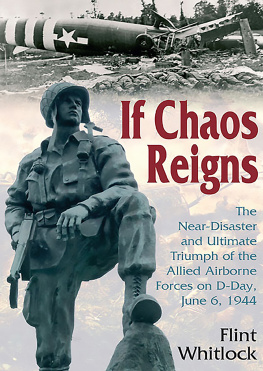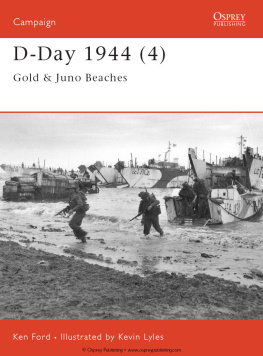Lieutenant Colonel Dan Harvey , now retired, served onoperations at home and abroad for forty years, including toursof duty in the Middle East, Africa, the Balkans and SouthCaucasus, with the UN, EU, NATO PfP and OSCE. He isthe author of Soldiering against Subversion: The Irish DefenceForces and Internal Security During the Troubles, 19691998 (2018); Into Action: Irish Peacekeepers Under Fire, 19602014 (2017); A Bloody Day: The Irish at Waterloo and A Bloody Night:The Irish at Rorkes Drift (both reissued 2017); and Soldiers ofthe Short Grass: A History of the Curragh Camp (2016).
IN THIS SERIES
A Bloody Day: The Irish at Waterloo (2017)
A Bloody Night: The Irish at Rorkes Drift (2017)
A Bloody Week: The Irish at Arnhem (2019)
First published in 2019 by
Merrion Press
An imprint of Irish Academic Press
10 Georges Street
Newbridge
Co. Kildare
Ireland
www.merrionpress.ie
Dan Harvey, 2019
9781785372414 (Paper)
9781785372421 (Kindle)
9781785372438 (Epub)
9781785372445 (PDF)
British Library Cataloguing in Publication Data
An entry can be found on request
Library of Congress Cataloging in Publication Data
An entry can be found on request
All rights reserved. Without limiting the rights under copyright reserved alone, no part of this publication may be reproduced, stored in or introduced into a retrieval system, or transmitted, in any form or by any means (electronic, mechanical, photocopying, recording or otherwise) without the prior written permission of both the copyright owner and the above publisher of this book.
Typeset in Bembo MT Std 11/15 pt
Cover front: American craft and personnel arrive atOmaha Beach, Irish amongst them, 6 June 1944.(World History Archive/Alamy Stock Photo)Cover back: RAF Dakota, 6 June 1944.(Gary Eason/Flight Artworks/Alamy Stock Photo)
ACKNOWLEDGEMENTS
When I was a boy growing up in Cork city throughout the 1960s and 1970s, the Second World War had not really been over for that long. When the neighbouring families required a babysitter I sometimes substituted for my older sister, and one evening in a nearby house, on just such an occasion, I found myself receiving a rather rushed babysitter briefing from the mother concerned. In the background, a decidedly distracted and flustered husband was rummaging around in the drawers of a sideboard, seeking something critical for the evening ahead. While he was conducting his urgent search, he left one of the drawers sufficiently ajar that I could plainly see the outline of what was unmistakably a Hitler Youth knife, etched with the motto Blut und Ehre (Blood and Honour). It was an item instantly recognisable to a young teenage boy of the time, for the Nazis were still the villains in comics like The Victor and at the pictures, and that was what all young boys knew.
The much sought-after item found, the couple hurriedly departed, uncharacteristically leaving the sideboard drawers unlocked. Intrigued, excited, and fascinated all at once, I wondered how the knife came to be there. Had its current owner taken it as a war trophy during military service in the British Army, and was there a story attached to its coming into his possession? Opening the drawer gingerly, I dared take it out and hold it in my hands. I was captivated and my imagination took full flight, transporting me to a daring night-time commando raid, a clandestine parachute drop behind enemy lines, the situations and scenarios limitless. It was the shortest babysitting session I ever experienced, as I imagined commandos fighting hand-to-hand in a desperate life-or-death struggle against a ruthless Nazi enemy.
On the return of the couple from their evening out, I was acutely tempted to ask the husband about the story of the knife, but at that age I was not old enough to ask directly, and anyway it was not appropriate under the circumstances. I resolved to get to the bottom of the matter, but unfortunately the family left the neighbourhood shortly thereafter and moved to Dublin, and to this day my quest was unfulfilled. Ever mindful of this, I decided that if I was ever again faced with a similar situation of encountering a Second World War veteran, I would not let the occasion of such meetings go by without at least enquiring into their wartime experiences. And so it was, and although such encounters were infrequent, they were very informative. Since then I have read, researched and reflected on the topic at length, specifically on the D-Day battlefield, and I have visited its beaches and areas of interest around the Normandy shoreline. Conscious of there being no overall associated Irish narrative as such, but knowing of individual involvements, I have always felt that only part was known of a larger, more complete and comprehensive participation of Irish forces, and so over time set about building up a story of the Irish contribution to the Normandy invasion.
In revealing this story of the D-Day Irish, I wish to acknowledge the advice and assistance of the staff of the Reference Section of the Imperial War Museum, London; Professor Jane Maxwell, Trinity College Dublin; Brenda Malone, National Museum of Ireland; Richard Bradfield, Boole Library, University College Cork; Professor Geoff Roberts, School of History, University College Cork; Doctor Steven OConnor, Centre dhistoire de Sciences Po, Paris; Stephen Leach, Local History Department, Cork City Library; Sergeant Wayne Fitzgerald, Editor, An Cosantir (the Irish Defence Forces magazine); Lieutenant-Colonel Fred ODonovan, for information on his father and uncle; and Phillip Ness, for details about his fathers D-Day participation.
I would also like to thank Kevin Myers for writing the Foreword to the book and otherwise for being in front of most everyone else in his consistent efforts over the decades to seek recognition for the involvement of Irish men and women in both World Wars, and to Richard Doherty, whose much-needed books on the Irish involvement in the Second World War amply and authoritatively illustrate this fact. Both have been generous with their time, knowledge and wisdom, and indeed have displayed great courtesy and patience with me, thank you sincerely.
To Paul OFlynn, for his immensely practical help with many matters associated with getting the manuscript and illustrations ready. To Deirdre Maxwell, for transforming my handwritten manuscript into a professionally typed, presentable version. Thereafter to Conor Graham, Publisher and Managing Director of Merrion Press, his Managing Editor, Fiona Dunne, Marketing Manager Maeve Convery, and editor Keith Devereux for seeing the books production from concept through process to becoming a reality, and for their overall faith in the project.











